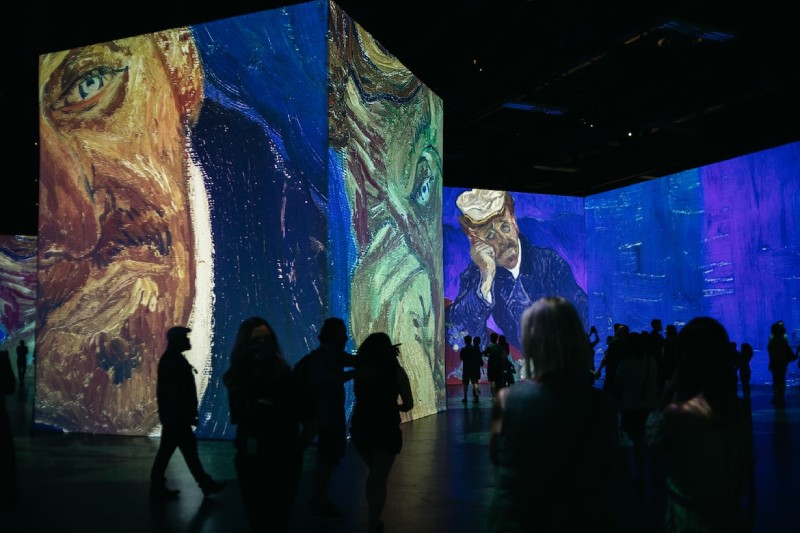Unveiling the Genius of Vincent van Gogh

The Dutch artist Vincent Van Gogh (1853-1890) is today seen as one of the great geniuses in painting. He was, however, seen as a “mad” painter by most of his contemporaries and the art community of the time.
Why, you may ask? The answer: he explored new ideas, mediums, and styles in ways only an artistic genius would dare to do. Modern art critics and scholars are still unveiling some of his ideas and practices as they study more than 2,000 paintings on the Vincent van Gogh list.
In this article, we’ll look at a definition of an artistic genius and some of the aspects of why art experts see Vincent van Gogh’s artwork as a genius.
What is an Artistic Genius?
According to some art experts, an artistic genius can transform the cultural landscape or change people’s perceptions of reality.
When we look at this definition, it is clear why art historians and critics describe Vincent van Gogh as an artistic genius. It is said that every Vincent van Gogh artwork either transforms some or other aspect of the cultural landscape or alters our perceptions of reality.
Vincent van Gogh’s drawings and paintings were created in different periods of his painting career – sometimes, they were created when he was inside an asylum, and other times when he was not in an asylum.
Nowadays, art historians agree that Van Gogh created his artworks as a genius and was not driven by his madness. However, he was crippled by the times of “insanity”. This is why art lovers and experts refer to Van Gogh as an artistic genius who suffered from a mental illness and not as an insane or mad painter.
He Used Trees as Subjects Like only a Genius would do
Van Gogh not only worked with colors like a genius, but he also used the subjects of his paintings to convey messages far beyond what the eye could see on the canvas. Trees, especially olive trees, had a special meaning for him. As an artistic genius, he used trees to communicate his philosophies about life to others.
The most famous Vincent van Gogh artwork is his olive tree painting at the end of his career while in an asylum. According to art scholars, it was a time when Van Gogh questioned life’s worth. In the Van Gogh tree paintings of that period, the olive trees represented the cycle of life for him.
The olive pickers in these tree paintings symbolize the relationship between man and nature. Van Gogh conveyed in a genius way his philosophy that individuals can connect with the divine through communion with nature.
Van Gogh felt so “connected” to olive trees that many paintings with “Olive Trees” as part of the title are found in the list of Vincent van Gogh paintings’ names. As a result, “Olive Trees with Yellow Sky and Sun” is one of the most famous Van Gogh paintings.
Van Gogh was Not Regarded as a Genius by his Contemporaries
Vincent Van Gogh is today regarded as the founder of the Impressionist Movement, although his contemporaries didn’t recognize Vincent van Gogh’s drawings and paintings as groundbreaking new art development. His professional career as an artist was short – only about ten years. But in that ten years, more than 2,000 Vincent van Gogh drawings and paintings were created.
His works include 860 oil paintings, more than 1,300 watercolors, drawings, and sketches. Because he was not recognized as a leading artist during his lifetime, nobody wanted to buy his paintings. Today, however, they are worth millions of dollars.
After his death, art critics and scholars started to analyze his work critically. As a result, art scientists and historians are still in the process of unveiling the full extent of Van Gogh’s genius.
Let’s look at only a few aspects of his works to illustrate what a genius he was.
He Used Color like a Genius
Van Gogh’s use of color is one of the most apparent aspects where it can be seen what a genius he was. He changed people’s perceptions of reality – one of the characteristics of a genius, according to our definition mentioned earlier in this article.
He used colors that were unusual at that time. He was always experimenting with color. With the insight of a genius, he was always experimenting to find the exact colors he had in mind to convey the emotion he felt. In other words, he didn’t use natural colors or depicted the actual colors of the subjects but experimented until he found the color matching the emotion he wanted to convey.
Although art scholars can nowadays scientifically explain why and how Vincent van Gogh mixed and applied different unusual colors on his canvases, Van Gogh, as an artistic genius, instinctively experimented on the canvas until he was satisfied.
He usually used dark colors like most other Dutch painters for the early artworks on the Van Gogh paintings list. But he was always fascinated by complementary colors. He read many books on color theory. And as an artistic genius, he kept on shifting the boundaries about the use of color. He implemented color theory in his works long before other painters, and in his later works, he used bright colors to convey the mood he wanted to share.
Conclusion
If it is true that an artistic genius is somebody with the ability to transform the cultural landscape or to alter our perception of a facet of reality, then was Vincent van Gogh an artistic genius who unfortunately lived with an illness that led to his early death. He was not an “insane painter” but a misunderstood genius artist. Fortunately, his value and genius were recognized after his death. According to some art critics, you can pick any work from the famous Van Gogh paintings list, and when viewing the artwork, you’ll experience that you are looking at the work of a genius.






